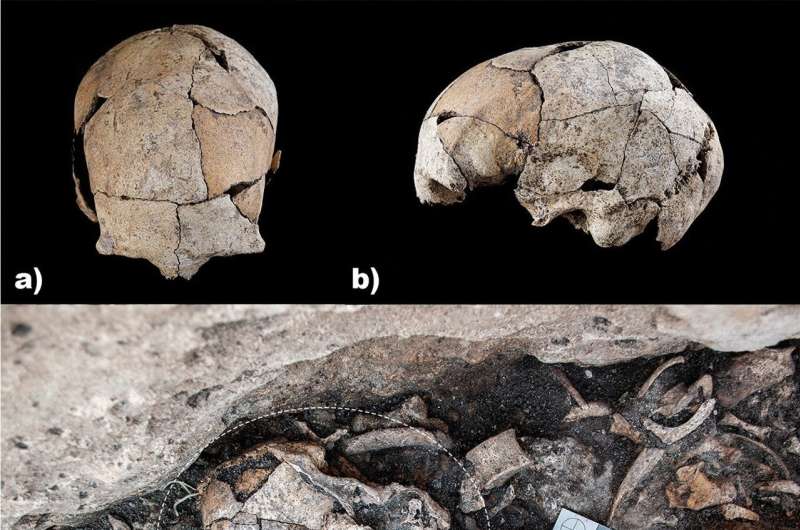February 23, 2022 report
Earliest evidence of ear surgery 5,300 years ago

A team of several researchers from the University of Valladolid, in Spain and one from the Spanish National Research Council in Italy, has found evidence of the earliest ear surgery performed on a human being. In their paper published in the journal Scientific Reports, the group describes their study of a human skull found at the Dolmen of El Pendónis back in 2018 and what they learned from it.
Dolmen of El Pendónis is a dig site near Burgos, Spain. Prior research has shown that the site was once used by early people as a funerary chamber. Prior research has also shown that the site was used for approximately 800 years, between 3,800 and 3,000 BC.
In the summer of 2018, a skull was found at the site and was put into storage. More recently, the researchers with this new effort retrieved the skull and took a closer look at it. In so doing, they found it bore evidence of a type of cranial surgery meant to cure an ear ailment. They also found evidence showing that the patient, a woman between the ages of 35 and 50, had survived the surgery—at least for a few months. There was evidence of bone regrowth in the holes that had been bored through her skull. The skull was dated to 5,300 years ago, making it the earliest known example of ear surgery.
The procedure, known today as a mastoidectomy, is done to clean out the area behind the ear that has become infected. Failure to correct the problem can lead to deafness in some cases, or progressive infections leading to more serious problems, including death. The woman who underwent the procedure required it on both ears. It is presumed that her condition was painful, enough so that she was willing to undergo what must have been an incredibly painful surgery. Further inspection of the skull showed she had lost a lot of teeth, suggesting she was quite old for the time. The researchers also found evidence of enlarged auditory canals, likely the result of the surgical procedure.
In the same tomb as the surgical patient, a flint tool was discovered—it had evidence of having been reheated several times, likely making it a cautery tool for stopping bleeding.
More information: Sonia Díaz-Navarro et al, The first otologic surgery in a skull from El Pendón site (Reinoso, Northern Spain), Scientific Reports (2022). DOI: 10.1038/s41598-022-06223-6
Journal information: Scientific Reports
© 2022 Science X Network




















